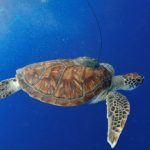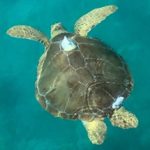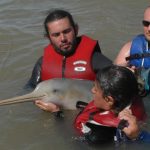← Back
Oceanic manta rays in the eastern Atlantic
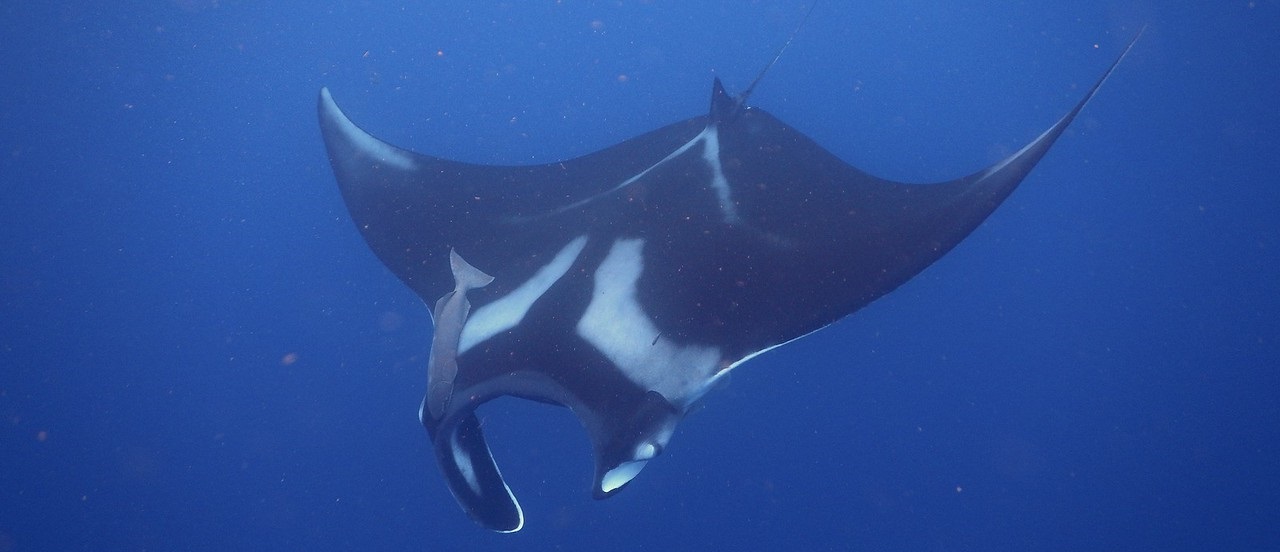
Oceanic manta rays are found around the tropical open oceans.
Their presence and behaviour in the East of the Atlantic Ocean was poorly known, and has been investigated using Argos satellite telemetry and on site sighting surveys around the Cap Vert archipelago.
Manta rays are planktivorous close relatives of sharks. The oceanic manta ray (Mobula birostris) is distributed all around the world, in tropical and temperate waters. They are found mostly in open ocean, but they can also frequent coastal habitats (while the reef manta ray, the other species of the genus, is mostly found in shallow waters – see A nursery for juvenile reef manta rays). Oceanic manta rays are considered endangered on a global scale on the IUCN Red List.
Their distribution and range around the world are poorly known, especially in the eastern Atlantic Ocean. Some sighting, either by fishermen or divers, have been recorded around Cap Vert and the Azores, but without systematic surveys, the length of their presence there, time of the year, their activities, ages or numbers are unknown. Both regions are biodiversity hotspots as well as productive fisheries
Eleven oceanic manta rays were fitted with towed satellite transmitting position-only tags around the island of Boavista, Cap Vert. Campaigns of photo-identification of the ventral side of the individuals were also conducted during 48 surveys over 2016–2019.
More info about animal tracking with Argos
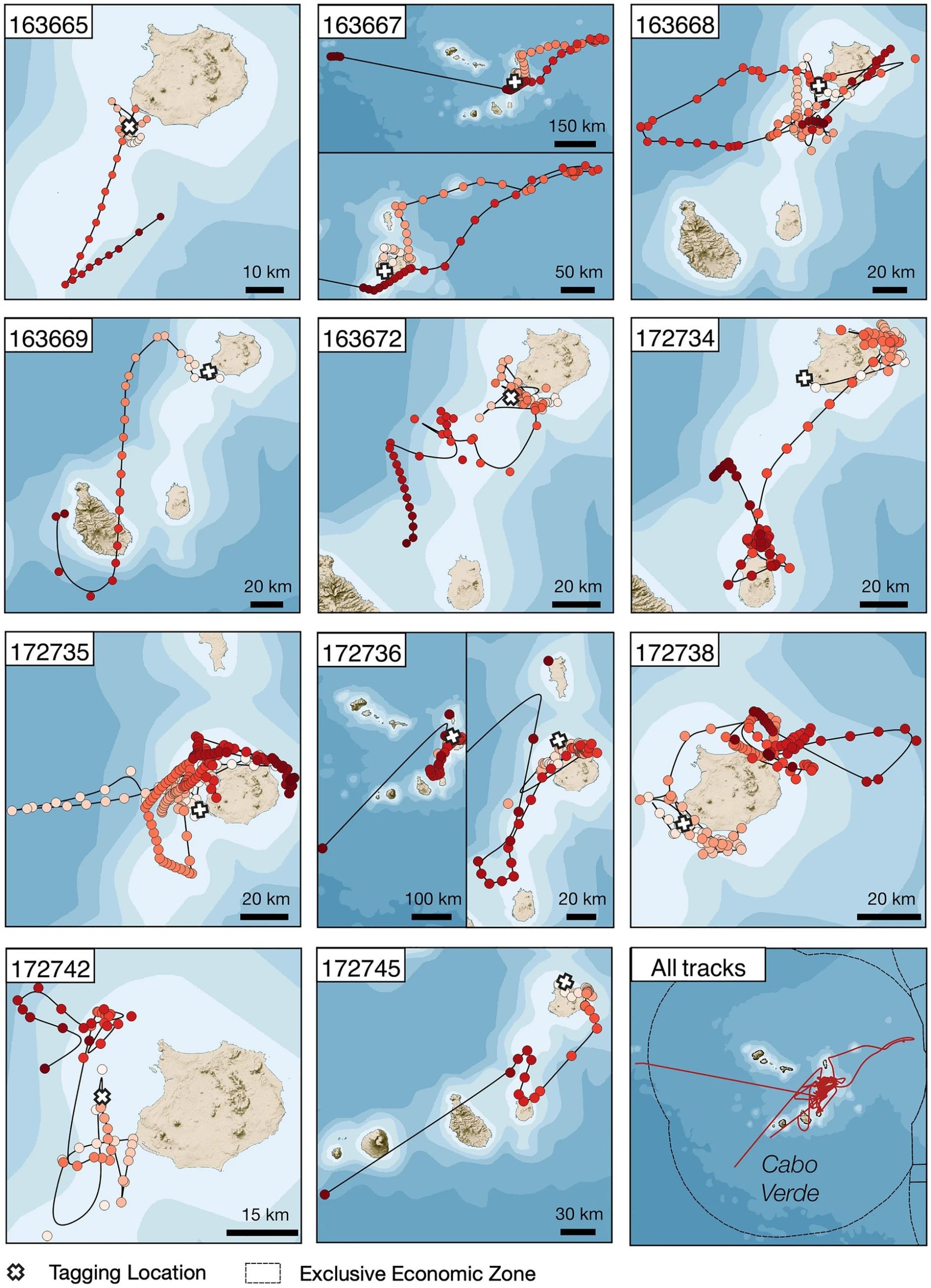
The tracked manta rays only moved either slightly further offshore of Boavista or the neighboring islands of Maio and Santiago. Only one was leaving the area when the tag stopped.
The Argos tags transmitted positions for an average of 57 days (minimum 13, maximum 99), which may be a bit short to fully assess the manta rays’ behaviours. In particular, it appears unlikely that the manta rays tracked are resident to Cap Vert year-round (in particular, no individual was ever re-sighted), but none were located in another area during the study, so the hypothesis would need some longer tracking and more systematic sighting reports to be asserted. Modelling based on the data and Chlorophyll-A abundance shows that winter seems less suitable, but there also it might be a bias due to no data received between February and July of any year of the study.
However, the tracking and sighting proved a presence of oceanic manta rays between July and January in the archipelago of Cap Vert across at least 6 different years. Cap Vert might be a key stop-over along the wide-scale movements of the species in the Atlantic Ocean. Predominance of small-scale or only semi-industrial fishing around the Archipelago leads to less by-catch risks.
However, large industrial vessels have been seen to be active in the area, which is a serious threat to the species. Understanding the precise role of the Cap Vert area is thus of importance to protect the oceanic manta rays in the Atlantic Ocean.
Reference & links
- Garzon, F., Seymour, Z.T.A., Monteiro, Z.L. et al. Spatial ecology of a newly described oceanic manta ray population in the Atlantic Ocean. Mar Biol 170, 68 (2023). https://doi.org/10.1007/s00227-023-04219-y
- MarAlliance website: https://maralliance.org/
- Rachel Graham profile: https://maralliance.org/team_members/dr-rachel-graham/
- Francesco Garzon profile: https://biosciences.exeter.ac.uk/staff/profile/index.php?web_id=Francesco_Garzon

